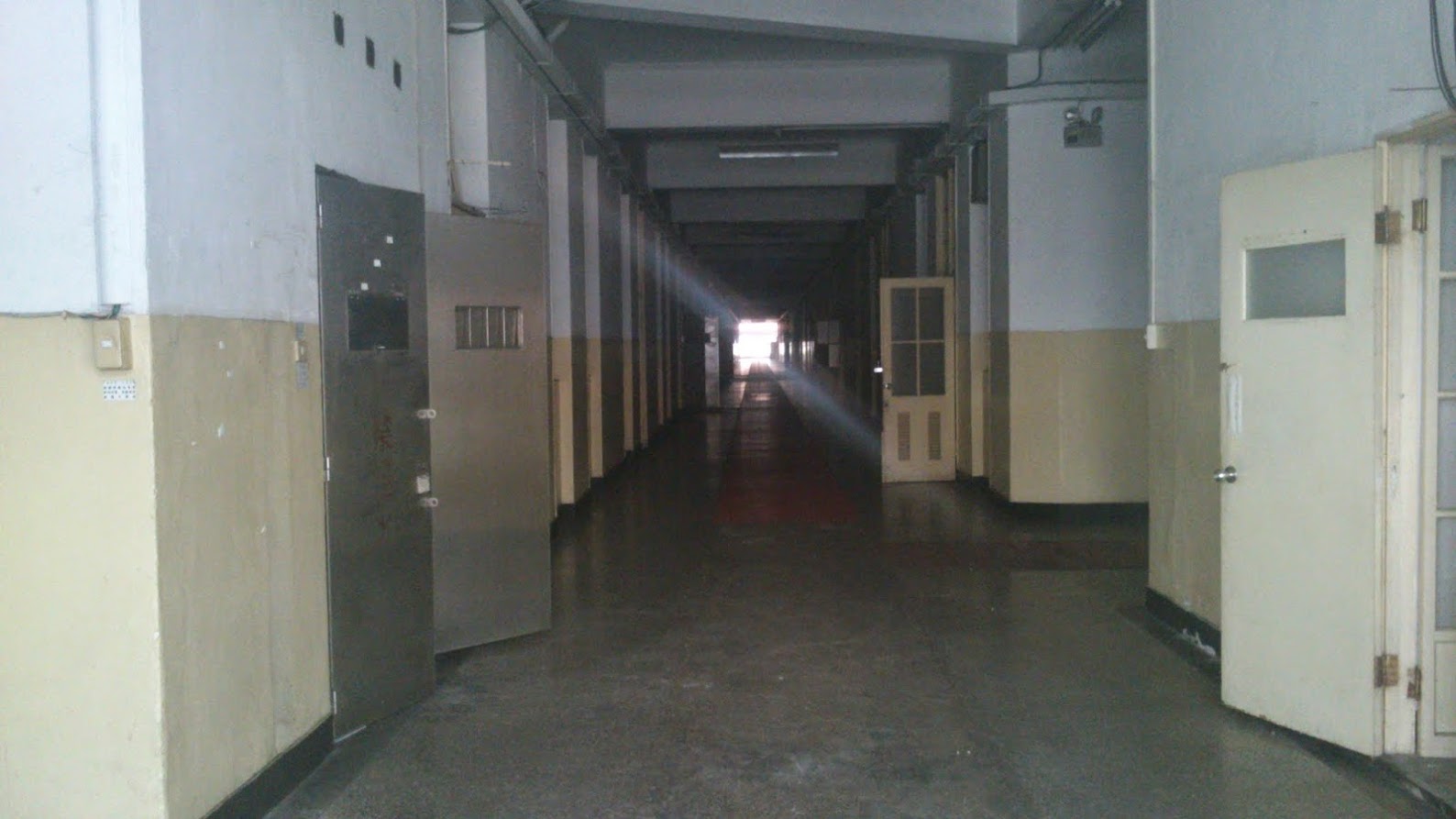Air Force Command
Air Force Command
A detention center located away from the Air Force Command
When exactly the Detention Center of the Military Law Office under the Air Force Command (the Air Force Detention Center) was established and disbanded remains unknown (most likely in 1949 and 1999 respectively). The detention center was originally registered at No. 2, Lane 251, Jianguo South Road, Taipei City, but it takes more evidence to verify its exact location at present (roughly between Alley 12 and 20, Lane 118, Section 3, Ren’ai Road, Taipei City, currently a residential area behind Fubon Insurance Group and Yanping High School). The Air Force Detention Center was exclusively for imprisoning people serving in the air force who were convicted of crimes during the 1950s to 1970s in the period of martial law.
The Air Force Command, previously located at today’s No. 55, Section 3, Ren’ai Road, Da’an District, Taipei City, was where the “Research Institute of the Taiwan Governor-General’s Office” (formerly known as the “Industrial Department of Central Research Institute of the Taiwan Governor-General’s Office) was built during Japanese rule in 1940. It was reorganized as the “Taiwan Provincial Industrial Research Institute” in January 1946. After the war, the institute was taken over by the Air Force Command in 1949 to be used as the Ren’ai Air Force Base under the Ministry of National Defense, until 2012 when the Air Force Command was moved out. In 2015, the entire base was registered as a cultural heritage site of Taipei City under the purview of the Industrial Development Bureau of the Ministry of Economic Affairs to set up the “Taiwan Air Force (TAF) Innovation Base,” which was renamed “Social Innovation Lab” in 2017, for the development of youth entrepreneurship programs for registered small and medium-sized enterprises (SMEs). In the same year, part of the area was transferred to the Ministry of Culture to establish the “Taiwan Contemporary Culture Lab,” to carry out exchanges of cultural experiments and social innovations.
According to the Huang Yanghui Law Violation Case files, there exists a letter revealing the whereabouts of Huang Yanghui, on which the delivery address is “No. 2, Lane 251, Jianguo South Road, Taipei City,” thereby making it possible to infer that the actual address of the Air Force Detention Center differed from that of the Air Force Command. Since Lane 251 of Jianguo South Road no longer exists, it can be inferred that its original location might have been in the residential area behind Fubon Insurance Group (No. 237, Lane 251, Section 1, Jianguo South Road) and Yanping High School (No. 275, Lane 251, Section 1, Jianguo South Road), which is roughly between Alley 12 and 20, Lane 118, Section 3, Ren’ai Road, Taipei City.
▲ The Air Force Command at present. (Photo by Lü Qi-zheng)

▲ Interior of the Air Force Command. (Photo by Lü Qi-zheng)
The exact location of the Air Force Detention Center remains a mystery
During the White Terror period, ordinary citizens involved in political cases would be interrogated and tried by intelligence agencies. Meanwhile, soldiers involved in political cases would be referred to the intelligence units of the armed forces they were subject to (Land, Sea and Air Forces, the Combined Service Forces, etc.), but most military trials would be performed by the Taiwan Provincial Security Command or the Taiwan Garrison Command. During the period of martial law, should political prisoners and ideological convicts be air force soldiers, they would most likely be imprisoned in the Air Force Detention Center. According to an inspection report written by Chiang Ching-kuo (then-Director of the General Political Department) in 1950, titled “Inspection Account of Military Prisons and Detention Centers in Taiwan,” there had been a total of 83 people jailed in the Air Force Detention Center by 1950, including 22 with a verdict and 61 without one.
According to political victim Deng Bochen, the Air Force Detention Center was “a Japanese-style house in the residential area between Xinyi Road and Ren’ai Road.” It can be inferred that the Air Force Detention Center was hidden within a traditional Japanese-style house instead of being situated within the Air Force Command.
Under the camouflage of the Japanese-style house, there was a row of brick cells set up in the rear, each of which was only 1.2 meters wide, 1.8 meters high and about 2.4 meters deep. Inside the cell wooden planks were laid on the raised floor about 30 centimeters above the ground. Prisoners would eat, sleep and do everything in the cells.
The Huang Yanghui Violation Case files also indicates that said detention center was comprised of four independent prisons, namely the Zhong, Xiao, Ren and Ai Prisons. The daily hours for the inmates to be let out of their cells were from 6:30 to 7:30 and 16:30 to 17:00. These prisons used an outside labor system, where workshops were set up for the prisoners to do labor. One particular provision of the regulations governing the detention center was as follows: “Those who constantly violate the set regulations shall be jailed in isolated single cells without being let out as punishment; those prisoners sentenced to the death penalty shall be jailed in single cells under strict monitoring.” This specific provision gives an insight into the strict rules and daily routine practiced in the Air Force Detention
基本資訊
0則留言
本網站使用Cookies收集資料用於量化統計與分析,以進行服務品質之改善。請點選"接受",若未做任何選擇,或將本視窗關閉,本站預設選擇拒絕。進一步Cookies資料之處理,請參閱本站之隱私權宣告。



